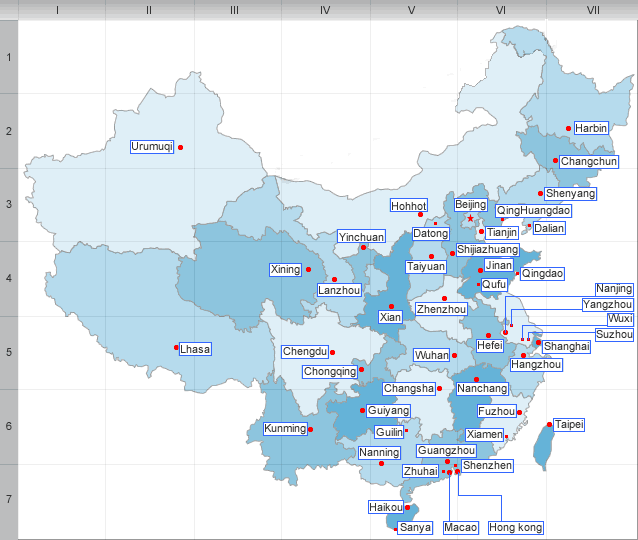Harbin City Overview
Located at longitude 125°42′-130°10′E and latitude 44°04′-46°40′N, as the provincial capital of Heilongjiang Province, Harbin is the political, economic and cultural center of the north of Northeast China, as well as a metropolis whose area is the largest and whose population is the second largest among all the provincial cities of China. The whole city covers an area of 53,100 km2, of which, the urban area is 7,086 km2, and the established area is 331.21 km2, with 8 districts and 10 counties (cities) under its administration. By the end of 2007, the total population with household register was 9,874,000, among which the population of the urban area was 4,755,000, covering 48 nationalities, and the population of ethnic minorities was 660,000.
Located in the center of Northeast Asia, Harbin is called the bright pearl on the Bridge of Eurasia Land, and it is also an important hub of Eurasia Land Bridge and air corridor. All the rivers within the area of Harbin belong to Songhua river system and Mudan river system, and the rainfall mainly concentrates between June and September, with the average annual precipitation of 569.1mm. Named “Ice City”, Harbin has medium-temperate continental monsoon climate, with long winter and short summer. 63 kinds of minerals have been found, and the reserves of 25 kinds of minerals have been verified within the whole city, including 1 energy mineral, 10 metal minerals, and 14 non-metal minerals. There are totally 12 natural reserves in the city, including 4 natural reserves at the provincial level, covering an area of 119400 hectares. 50 kinds of wild animals are listed as first and second class protection species, and 7 kinds of plants are listed as first and second class protection species.
The five railways of Harbin include Harda, Binsui, Binzhou, Binbei and Labin, which connects the other railways within the country. The water transportation of Harin covers the Songhua River, the Heilongjiang River, the Wusuli River and the Nen River, and connects with some Russian Far East ports. Through the river and sea combined water transportation, the ships can reach Tartar Channel eastward and directly arrive in such areas as Japan, North Korea, South Korea and Southeast Asia.
The volume of passengers entering and exiting Harbin Taiping International Airport reaches 4,437,000 person-times every year. 23 domestic and oversea airlines have commenced operation in Harbin Airport, and opened 82 domestic and international lines, reaching 47 cities. The air transportation network, with Harbin as the center, radiating important cities of China and connecting the surrounding countries such as Russia, Japan and Korea, and European and major American countries, has been initially formed. Harbin Taiping International Airport has become a significant air harbor of Southeast Asia.
The special historical course and geographical position has contributed to Harbin, the beautiful city with an exotic tone, which not only brings together the historical culture of northern ethnic minorities, but also combines western and eastern culture. It is a famous historical and tourist city in China, with many beautiful names such as “the City of Culture”, “the City of Music”, “Ice City”, “A Pearl under the Neck of the Swan”, “Eastern Moscow”, and “Eastern Little Paris”.
The city flower of Harbin is lilac. The postcode of Harbin is 150000, telephone area code is 0451, and zip code is 230100.
| PREV:Xinzheng Overview | Next:Xingyang Overview |



